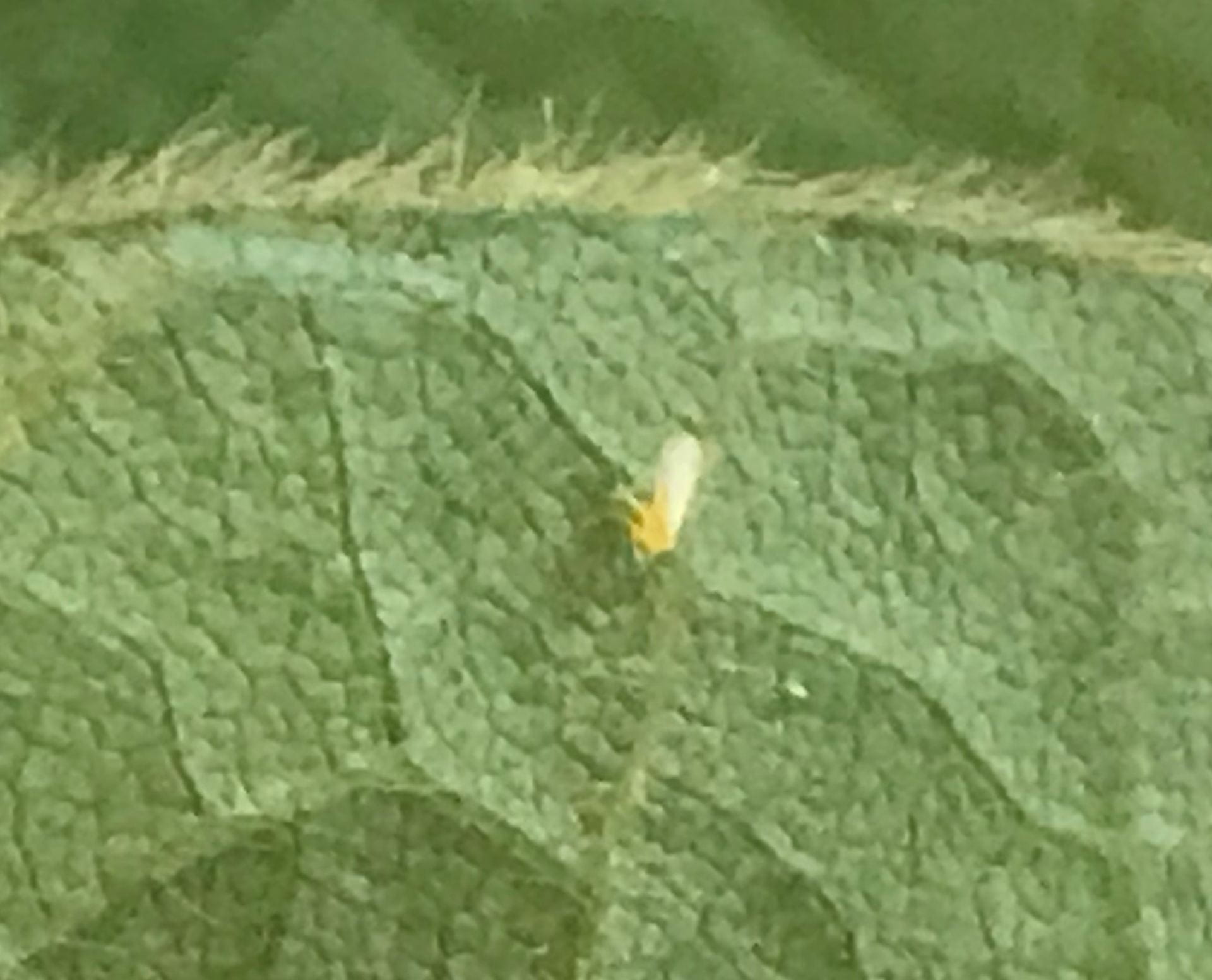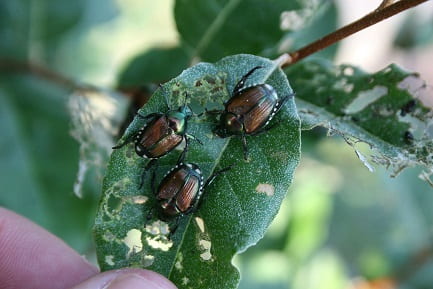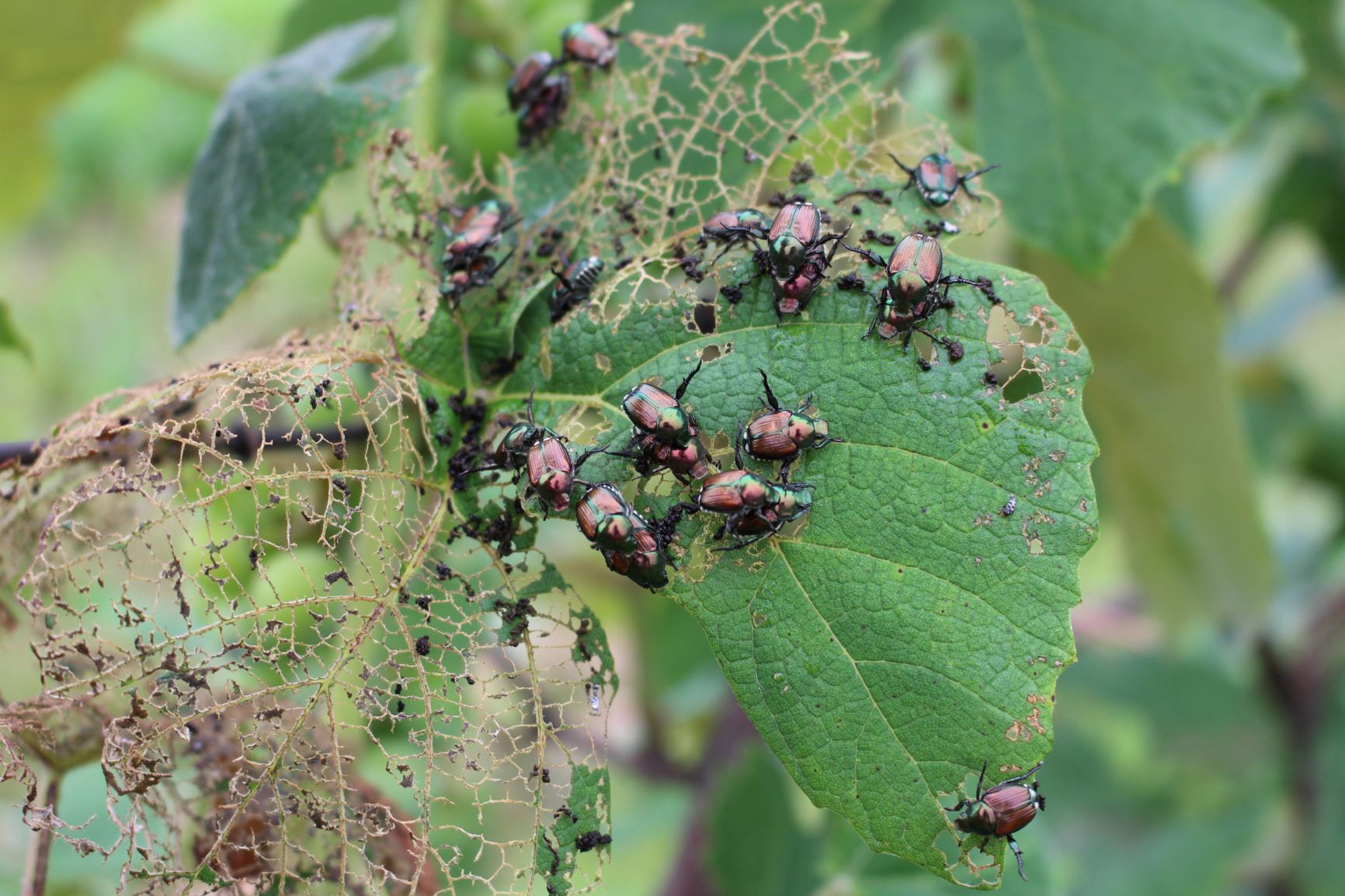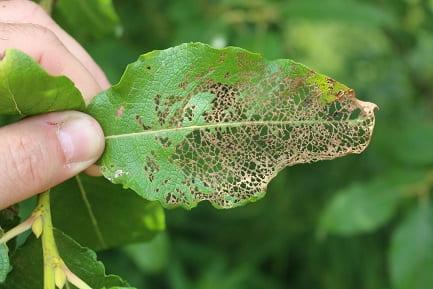–by Dr. Raymond Cloyd — Horticultural Entomology
Squash bug, Anasa tristis, females have laid eggs and various stages of the nymphs are present feeding on squash and pumpkin leaves. Squash bug adults are flattened to 1/2 to 3/4 inches in length. Adults are dark-brown and have wings with brown-to-black and orange markings along the outer edge of the body (Figure 1). Females lay red eggs on the underside of leaves. Nymphs emerge (eclose) from the eggs in seven to 14 days and undergo five instars (stages between each molt) before maturing to adults. Young nymphs have a pale-green abdomen (Figure 2) and tend to gather near the eggs they emerged from. Older nymphs are gray (Figure 3) and tend to distribute themselves over the entire plant. Nymphs are 3/16 to 1/2 inches long. The nymphs cannot fly because they do not have fully developed wings.

Figure 1. Squash bug adult (Raymond Cloyd, KSU)

Figure 2. Young squash bug nymphs (Raymond Cloyd, KSU)
Figure 3. Older squash bug nymphs (Raymond Cloyd, KSU)

Figure 3. Older squash bug nymphs (Raymond Cloyd, KSU)

Figure 4. Feeding damage caused by squash bug (Raymond Cloyd, KSU)
Squash bug nymphs and adults use their piercing-sucking mouthparts to withdraw plant fluids from leaves, stems, vines, and fruits. Damage to leaves appears as small, yellow specks that eventually turn brown (Figure 4).
What can you do? Well, below are the plant protection strategies that you can implement to mitigate problems with squash bugs and prevent subsequent plant damage.
- Check plants for the presence of eggs, nymphs, and adults on leaf undersides at least once per week during the growing season.
- Destroy eggs, and remove (handpick) nymphs and adults, placing them into a container with soapy water to kill them. Handpick every three to four days.
- Place a floating row cover over plants to protect them from squash bug nymphs and adults.
- Position wooden boards throughout the garden, turning them over daily to collect squash bugs hiding underneath, and then killing them by placing into a container of soapy water.
- Apply a contact insecticide such as, potassium salts of fatty acids (insecticidal soap) or a mineral-based horticultural oil when the nymphs are present. The smaller nymphs are easier to kill than the larger nymphs. Adult squash bugs have a thickened waxy cuticle (skin) that insecticides cannot adhere to and penetrate. Adults are also protected from insecticide sprays by the leafy plant canopy. Weekly applications of contact insecticides may be required to maintain populations below levels that will prevent plant damage. Thorough coverage of the leaf undersides is important to suppress squash bug populations.
For more information on how to manage squash bug refer to the following extension publication:
Squash Bug (MF3308 July 2016)
https://www.bookstore.ksre.ksu.edu/pubs/MF3308.pdf













